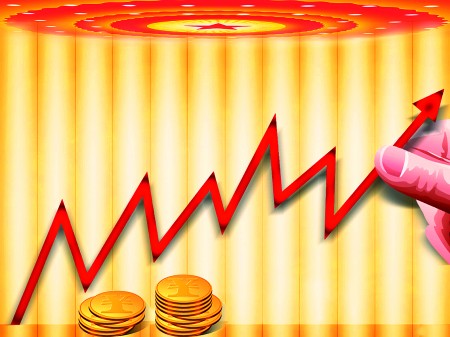Economists: China able to avert collapse

The driving forces indicate that the Chinese economy will maintain a moderately high growth at least until 2030.
Now that the Chinese economy has entered the “new normal,” its breakneck growth has slowed to a more moderate level, prompting speculation that the country is entering the middle-income trap. Some commentators have gone so far as to predict the collapse of the real estate market and society as a whole, but Chinese economists argue that these analyses have no grounding in fact.
China has developed well, defying narratives that downplay its economic achievements, said Zhang Yu, head of the School of Economics at Renmin University of China. In the past three decades, the Chinese economy has grown a hundredfold to become the second largest in the world. In terms of GDP per capita, China has become a middle-income country. Now, China has more powerful comprehensive national strength, and its people have a higher quality of life, he said.
Moreover, official statistics show that China has also transitioned from an agricultural nation to an industrial power. China ranks first in the world in terms of its output of more than 220 types of industrial products.
Some commentators view China with a deep-rooted bias, and their criticisms have become cliché, said Mo Tong, a professor from the School of International and Public Affairs at Shanghai Jiaotong University. They tend to make sensational statements without knowledge of China’s economic realities, or they are pessimistic about Chinese economic data based on an understanding of Western economics. Others defame China deliberately for their own benefits, he said.
The mainstream Western models are based on certain assumptions, but the economic growth of China does not necessarily agree with these assumptions, Mo said. He said China follows a socialist market economy, and it has proposed internationally influential strategies, such as the “Belt and Road,” for which Western analytical frameworks fail to account.
Xiao Jincheng, director of the Institute of Spatial Planning and Regional Economy at the National Development and Reform Commission, attributed the slowdown in Chinese economic growth to the ongoing restructuring and the changes in supply and demand. He said it is hard for energy-intensive, heavily polluting low-tech industries to be phased out naturally in a strong economy, and pressure is needed to cool the economy. Moreover, since 2008, international demand has been decreasing, affecting exports, foreign trade and investment, while the increase in domestic demand has been small, he said. “The decrease in growth rate from 7.5 percent in 2014 to 6.9 percent in 2015 is the result of regulatory efforts,” he said.
Xiao said China is experiencing sufficient endogenous growth momentum. Urbanization will unleash greater consumer demand. As more people move to cities, there will be substantial growth in housing and consumption demand, which will sustain the economic dynamism, Xiao said.
The declining surplus of labor will raise the incomes of laborers, also stimulating consumption. Moreover, urban infrastructure construction will require increased private investment. At the same time, there is large space for rural infrastructure investment. “These driving forces indicate that the Chinese economy will maintain moderately high growth at least until 2030,” he said.
Wang Qin, a research fellow from the Institute of Industrial Economics at the Chinese Academy of Social Sciences, said industrial development is still the key to economic growth in China. He said it is incredible that industrial enterprises took in a combined profit of 6.35 trillion RMB last year as the economy entered into the “new normal.” And the “Made in China 2025” strategy was introduced to push forward the transformation and upgrading of the manufacturing industry, increase the quality and efficiency of enterprises, and improve innovation ability, he added.
In addition, scholars said the Beijing-Tianjin-Hebei Coordinated Development Initiative, the Yangtze River Economic Zone and other measures will also promote the steady development of China.
Scholars said the “going global” strategy is also vital to sustainable economic growth in China.
Using the “Belt and Road” initiative as an example, Xiao said it is the right time to draw on the experience of the reform and opening up by setting up special economic zones, development zones and industrial parks, and improving the investment environment in the implementation of the strategy.
Yao Yang, director of the National School of Development at Peking University, said the most significant purpose of the “Belt and Road” is to share the dividends of Chinese development with the world and developing countries in particular. China began to aid other developing countries when it was economically backward. Now that it is more prosperous, it should help to reduce poverty and allow them to piggyback on China’s development.
Zhang Junrong is a reporter at the Chinese Social Sciences Today.

 PRINT
PRINT CLOSE
CLOSE